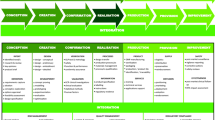Abstract
BACKGROUND: New medical technologies are used at different rates among whites and blacks. This variation may be partially explained by racial differences in patient innovativeness—the propensity of patients to adopt unfamiliar therapies.
OBJECTIVE: To measure how innovativeness varies among patients and how it may influence patients’ attitudes toward new medical technologies.
DESIGN: Cross-sectional survey.
PARTICIPANTS: Primary care patients (n=171–108 blacks, 63 whites) at an urban Veterans Affairs medical center.
MEASUREMENTS: Respondents answered questions about their general innovativeness and innovativeness regarding medical technology, and they responded to a vignette describing either a hypothetical new prescription drug or implantable device.
RESULTS: There were no significant racial differences in general innovativeness, but whites had higher medical technology innovativeness (P=.001). Whites were also more likely to accept the new prescription drug (P=.003), but did not differ from blacks in acceptance of the new implantable device. In multivariate analyses, lower medical technology innovativeness scores among blacks were significantly associated with less favorable reactions to both the prescription drug (P<.001) and the medical device (P<.001). In contrast, although whites with lower medical technology innovativeness were similarly less inclined to accept the new implantable device (P=.02), there was no significant association between medical technology innovativeness and positive attitudes to the new prescription drug among whites.
CONCLUSIONS: Blacks and whites have differing attitudes toward medical innovation. These differences are associated with significant racial differences in response to particular health care technologies. These findings suggest potentially remediable causes for racial differences in the utilization of innovative medical technologies.
Similar content being viewed by others
References
Barnhart JM, Fang J, Alderman MH. Differential use of coronary revascularization and hospital mortality following acute myocardial infarction. Arch Intern Med. 2003;163:461–6.
Epstein AM, Weissman JS, Schneider EC, Gatsonis C, Leape LL, Piana RN. Race and gender disparities in rates of cardiac revascularization: do they reflect appropriate use of procedures or problems in quality of care? Med Care. 2003;41:1240–55.
Groeneveld PW, Laufer SB, Garber AM. Technology diffusion, hospital variation, and racial disparities among elderly Medicare beneficiaries. Med Care. 2005;43:320–9.
Groeneveld PW, Heidenreich PA, Garber AM. Trends in implantable cardioverter-defibrillator racial disparity: the importance of geography. J Am Coll Cardiol. 2005;45:72–8.
Arozullah AM, Ferreira MR, Bennett RL, et al. Racial variation in the use of laparoscopic cholecystectomy in the Department of Veterans Affairs medical system. J Am Coll Surg. 1999;188;604–22.
Petersen LA, Wright SM, Peterson ED, Daley J. Impact of race on cardiac care and outcomes in veterans with acute myocardial infarction. Med Care. 2002;40(suppl 1): 186–96.
Sedlis SP, Fisher VJ, Tice D, Esposito R, Madmon L, Steinberg EH. Racial differences in performance of invasive cardiac procedures in a Department of Veterans Affairs Medical Center. J Clin Epidemiol. 1997;50:899–901.
Agarwal R, Prasad J. A conceptual and operational definition of personal innovativeness in the domain of information technology. Inf Syst Res. 1998;9:204–15.
Armstrong K, Weiner J, Weber B, Asch DA. Early adoption of BRCA1/2 testing: who and why. Genet Med. 2003;5:92–8.
Peterson ED, Shaw LK, DeLong ER, Pryor DB, Califf RM, Mark DB. Racial variation in the use of coronary-revascularization procedures. Are the differences real? Do they matter? N Engl J Med. 1997;336:480–6.
Rogers EM. Diffusion of Innovations. 5th ed. New York, NY: Free Press; 2003.
Mudd S. The place of innovativeness in models of the adoption process: an integrative review. Technovation. 1990;10:119–36.
Goldsmith RE. The validity of a scale to measure global innovativeness. J Appl Bus Res. 1990–1991;89–97.
Hurt HT, Joseph K, Cook CD. Scales for the measurement of innovativeness. Human Commun Res. 1977;4:58–65.
Flynn LR, Goldsmith RE. A validation of the Goldsmith and Hofacker innovativeness scale. Educat Psychol Meas. 1993;53:1105–16.
Goldsmith RE, Freiden JB. The generality/specificity issue in consumer innovativeness research. Technovation. 1995;15:601–12.
Goldsmith RE, Hofacker CF. Measuring consumer innovativeness. Acad Marketing Sci. 1991;19:209–21.
Shapiro SS, Wilk MB. An analysis of variance test for normality (complete samples). Biometrika. 1965;52:591–611.
Agresti A, Finlay B. Statistical Methods for the Social Sciences. 3rd ed. Upper Saddle River, NJ: Prentice-Hall; 1997.
Heidenreich PA, Shlipak MG, Geppert J, McClellan M. Racial and sex differences in refusal of coronary angiography. Am J Med. 2002;113:200–7.
Kressin NR, Clark JA, Whittle J, et al. Racial differences in health-related beliefs, attitudes, and experiences of VA cardiac patients: scale development and application. Med Care. 2002;40(suppl 1):I72–85.
Chambers DW. Technology innovation. J Am Coll Dent. 2001;68:41–5.
van der Weide M, Smits J. Adoption of innovations by specialised nurses: personal, work and organisational characteristics. Health Policy. 2004;68:81–92.
Author information
Authors and Affiliations
Corresponding author
Additional information
Dr. Groeneveld was supported by a research career development award from the Department of Veterans Affairs Health Services Research and Development service. Additional support for this project was provided by a grant from the VA’s Center for Health Equity Research and Promotion.
Rights and permissions
About this article
Cite this article
Groeneveld, P.W., Sonnad, S.S., Lee, A.K. et al. Racial differences in attitudes toward innovative medical technology. J Gen Intern Med 21, 559–563 (2006). https://doi.org/10.1111/j.1525-1497.2006.00453.x
Received:
Revised:
Accepted:
Issue Date:
DOI: https://doi.org/10.1111/j.1525-1497.2006.00453.x




